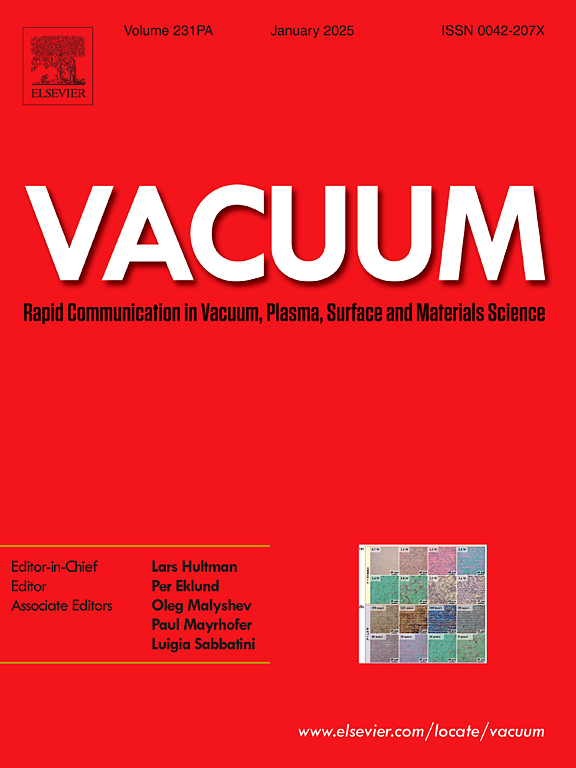Optimization of plasmonic multilayer stacks through control of magnetron sputtering deposition conditions
IF 3.8
2区 材料科学
Q2 MATERIALS SCIENCE, MULTIDISCIPLINARY
引用次数: 0
Abstract
Understanding the growth mechanisms of metallic silver nanoparticles is crucial for optimizing their use in advanced optical applications, such as plasmonic devices and sensors. This study examined the growth of silver nanoparticles deposited by DC magnetron sputtering, focusing on the effects of deposition pressure, substrate material, and sample temperature. Multilayer plasmonic stacks were analyzed using techniques such as X-ray photoelectron spectroscopy (XPS), X-ray diffraction (XRD), and transmission electron microscopy (TEM) with energy dispersive X-ray spectroscopy (EDS). These characterizations are supported by finite-difference time-domain (FDTD) simulations to model and compare the optical response with experimentally obtained spectra. The results demonstrate the influence of deposition conditions on nanoparticle distribution, shape, and optical properties, offering insights and simulation tools for optimizing large-area plasmonic systems.
通过控制磁控溅射沉积条件优化等离子体多层堆叠
了解金属银纳米颗粒的生长机制对于优化其在等离子体器件和传感器等先进光学应用中的应用至关重要。本研究考察了直流磁控溅射沉积银纳米颗粒的生长,重点研究了沉积压力、衬底材料和样品温度对银纳米颗粒生长的影响。利用x射线光电子能谱(XPS)、x射线衍射(XRD)、透射电子显微镜(TEM)和能量色散x射线能谱(EDS)等技术对多层等离子体堆叠进行了分析。这些特性得到时域有限差分(FDTD)模拟的支持,并将光学响应与实验得到的光谱进行比较。结果表明沉积条件对纳米粒子分布、形状和光学性质的影响,为优化大面积等离子体系统提供了见解和模拟工具。
本文章由计算机程序翻译,如有差异,请以英文原文为准。
求助全文
约1分钟内获得全文
求助全文
来源期刊

Vacuum
工程技术-材料科学:综合
CiteScore
6.80
自引率
17.50%
发文量
0
审稿时长
34 days
期刊介绍:
Vacuum is an international rapid publications journal with a focus on short communication. All papers are peer-reviewed, with the review process for short communication geared towards very fast turnaround times. The journal also published full research papers, thematic issues and selected papers from leading conferences.
A report in Vacuum should represent a major advance in an area that involves a controlled environment at pressures of one atmosphere or below.
The scope of the journal includes:
1. Vacuum; original developments in vacuum pumping and instrumentation, vacuum measurement, vacuum gas dynamics, gas-surface interactions, surface treatment for UHV applications and low outgassing, vacuum melting, sintering, and vacuum metrology. Technology and solutions for large-scale facilities (e.g., particle accelerators and fusion devices). New instrumentation ( e.g., detectors and electron microscopes).
2. Plasma science; advances in PVD, CVD, plasma-assisted CVD, ion sources, deposition processes and analysis.
3. Surface science; surface engineering, surface chemistry, surface analysis, crystal growth, ion-surface interactions and etching, nanometer-scale processing, surface modification.
4. Materials science; novel functional or structural materials. Metals, ceramics, and polymers. Experiments, simulations, and modelling for understanding structure-property relationships. Thin films and coatings. Nanostructures and ion implantation.
 求助内容:
求助内容: 应助结果提醒方式:
应助结果提醒方式:


